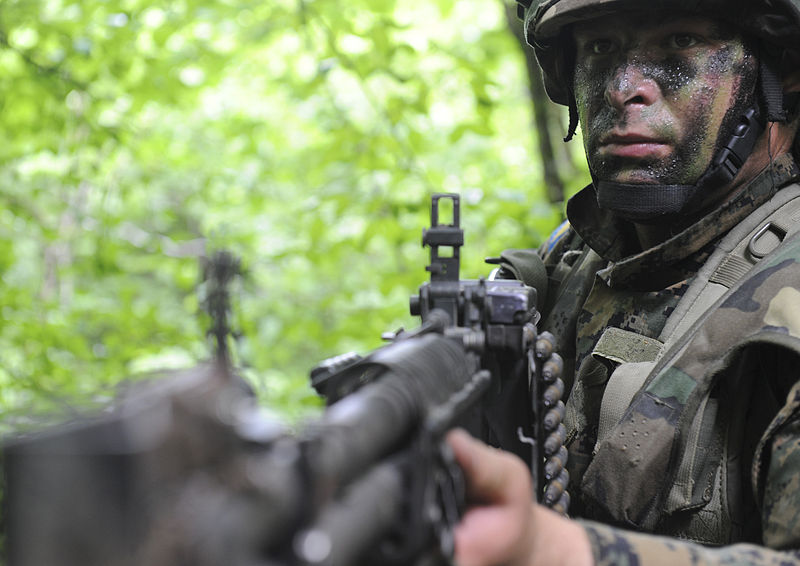As my colleague Kevin Drum pointed out Wednesday, a lot of journalists are seeking to say something meaningful about guns in the wake of Newtown…and failing miserably because their knowledge of guns is rather limited. In fact, this is grist for the NRA, which constantly rails against “the liberal media” and unarmed citizens: If you don’t know guns inside and out, they argue, you have no right to an opinion on the issue. (It didn’t take long for a similar argument to break out on one of our Newtown-related comment threads.)
Not every advocate of firearms law reform is an uninformed blanket gun-banner. But there is enough bad info floating around in the blogosphere that we decided to shed some light on a few of gun culture’s most confounding terms. Got suggestions for more entries? Add them in the comments below.
Automatic
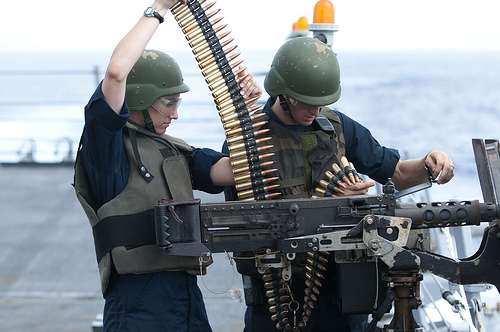
Now synonymous with fully or full automatic, this connotes a firearm that continuously fires with a single pull of the trigger, and stops only when the trigger is released or the ammunition runs out (or when the gun’s machinery fails, due to overheating or jamming). These include machine guns. Under the landmark National Firearms Act of 1934, the Gun Control Act of 1968, and the Firearm Owners Protection Act of 1986, it is generally illegal for civilians to own these weapons. Exceptions are made for dealers and collectors who obtain permission in the form of a special Federal Firearms License from the FBI and ATF. Many states place additional restrictions on automatic weapons.
Semi-automatic
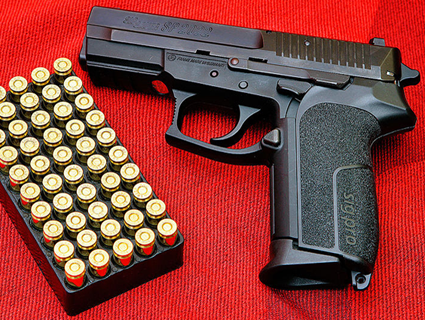
The vast majority of modern guns sold and collected in the US are semi-automatic, which means they fire a single shot with every pull of the trigger, but automatically reload between shots. That’s in contrast to full-automatic weapons, as well as single-shot guns that require the operator to “cock” the gun or hand-feed ammunition between shots. (There are a variety of sporting weapons that are single shot, such as lever-action, bolt-action, and breech-loading rifles, pump-action shotguns, and many revolvers.)
Machine gun
A firearm that only fires in full-automatic mode. In the military, these generally refer to large, heavy weapons like the M60 (pictured) or M240, which are fed large amounts of ammunition via a belt or drum. These usually fire rifle or other high-velocity ammunition over long distances, but the term can also refer to lighter rapid-fire weapons and submachine guns that fire shorter, blunter “handgun” ammunition in full-auto mode, like “Tommy guns” and Uzis.
Assault weapons
Assault weapon is a nebulous and relatively recent term. It generally refers to a class of military-style, semi-automatic magazine-fed rifles and carbines that fire high-powered ammunition and carry features or modifications that could be especially useful in combat. They evolved from military assault rifles, in particular the AK-47 and the M16/M4, which are selective-fire weapons: depending on the model, the shooter can select whether the gun fires in semi-auto, full-auto, or three-round bursts.
The most common assault weapons are civilian variations on the AK-47 and M16 designs; these include the Bushmaster carbine used in the Newtown massacre last week. The Federal Assault Weapons Bill, which became law in 1994 (and expired in 2004), banned specific types of guns such as AR15s, MAC10s, and TEC9s, but it also forbade possession of rifles and handguns that featured two or more military-style modifications (pistol grips, oversize magazines, and folding stocks, for example). California, one of a few states that maintains its own ban on assault weapons, uses this rather confusing flowchart to define the term.
Rifles, carbines, and shotguns
Rifles are highly accurate, high-powered long guns. Carbines are usually shorter and lighter versions of rifles. (Compare, for instance, the military’s M16 rifle and M4 carbine.) Shotguns are designed to fire shot, a cluster of small projectiles. They can also fire a very large single ball or slug. The main distinction between shotguns and rifles is that the barrels of the former are smooth, while the latter have “rifled” barrels: spiral-patterned grooves that impart a spin to the slug for greater accuracy over long distances.
Magazine
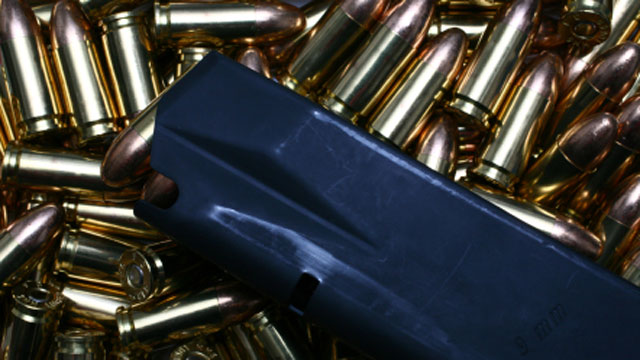
An enclosed container that stores and feeds ammunition into a gun for use. Many people refer to it as a clip, though those are technically different, because they’re not enclosed (and are generally passé). As firepower goes, assault weapons and semi-automatic handguns are limited only by the capacity of their magazines. A few states currently bar gun owners from possessing high-capacity magazines.
Clip
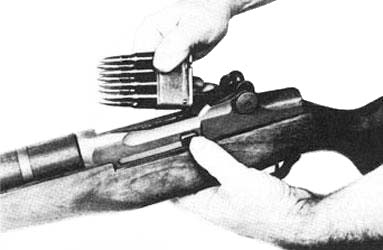
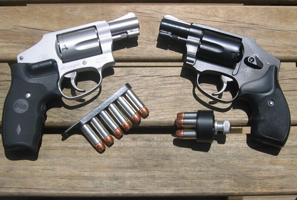
Clips usually are rails to hold ammunition that’s fed into a rifle, like the military’s old M1 (see the above illustration, left). It can also refer to a circular “moon” clip that holds ammunition for easy feeding into a revolver (above right). Rappers, TV writers, and journalists often use “clip” and “magazine” interchangeably.
Bullet
The bullet (1 in the diagram above) is technically the projectile that is fired from a gun. It is part of a cartridge, and is encased (2) with a gunpowder propellant (3). Cartridges and bullets are sometimes referred to colloquially as rounds.
Brady Act
The Brady Handgun Violence Prevention Act, signed into law by Bill Clinton in 1994, requires individuals purchasing guns from licensed dealers to submit to an instant background check against an FBI-maintained criminal database. It also limits who can be a firearms dealer. The Brady bill is often confused with the Federal Assault Weapons Ban, which was passed the same year. It’s named for James Brady, the White House press secretary who was paralyzed in a gunman’s attempt to assassinate Ronald Reagan in 1981.
Form 4473
When you buy a gun from a licensed dealer, you fill out a federal transaction record, Form 4473. A copy goes to the Bureau of Alcohol, Tobacco, Firearms, and Explosives, and dealers are required to keep copies for 20 years. Additionally, dealers must keep a record of that purchase info in a “bound-book,” which they surrender to the government upon retirement. The 4473 is often the only record of a legal gun purchase from a licensed dealer in the United States.
Gun-show loophole
Not everyone is subject to the requirements of the Brady Act. Individual gun owners who don’t buy and sell weapons as their primary means of income can make “occasional” sales without running a background check on the buyer…or even maintaining a paper record of the sale (no 4473s necessary). Such private sales typically occur at gun shows, or via the classified sections of publications like the Shotgun News. The Coalition to Prevent Gun Violence estimates that 40 percent of US gun sales pass through this “loophole.”
Photos: Navy; Wikimedia; Wikimedia; KETV; Wikimedia; Photobucket; Wikimedia.
